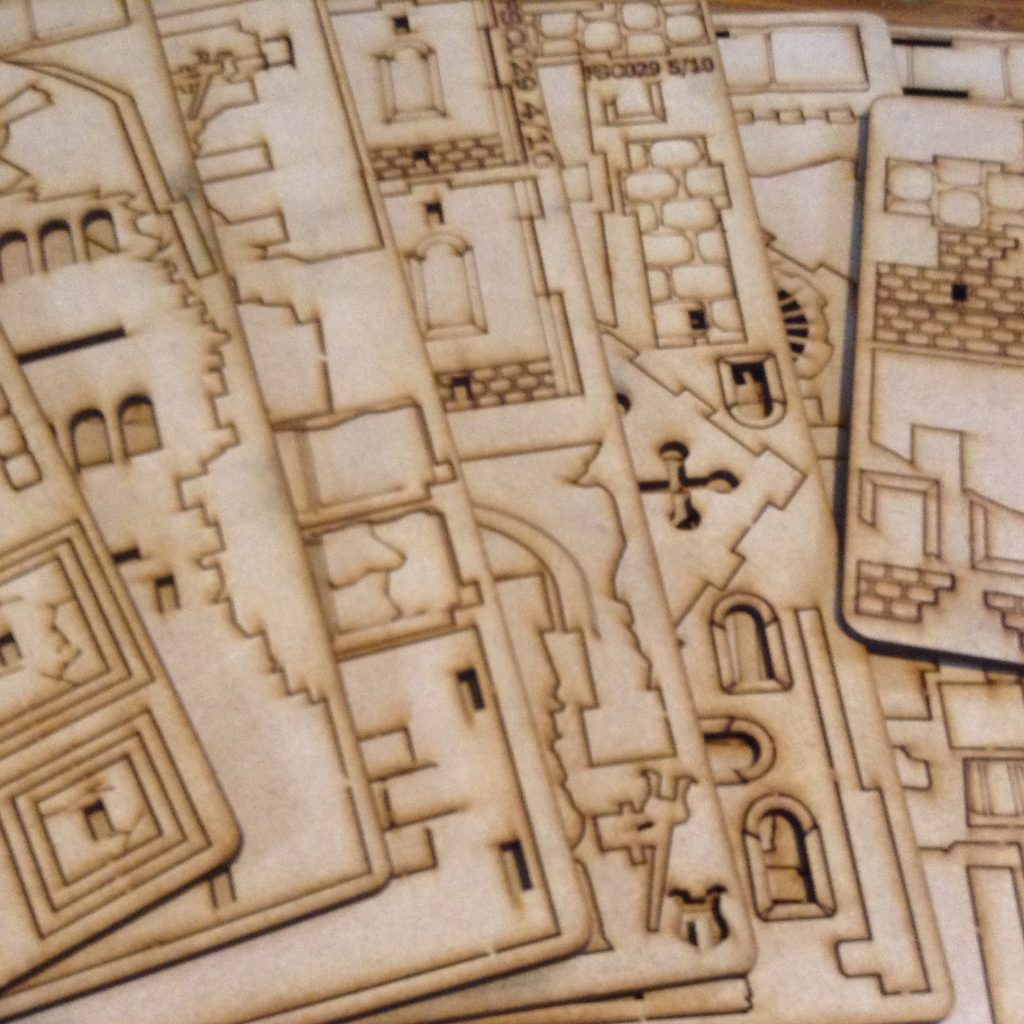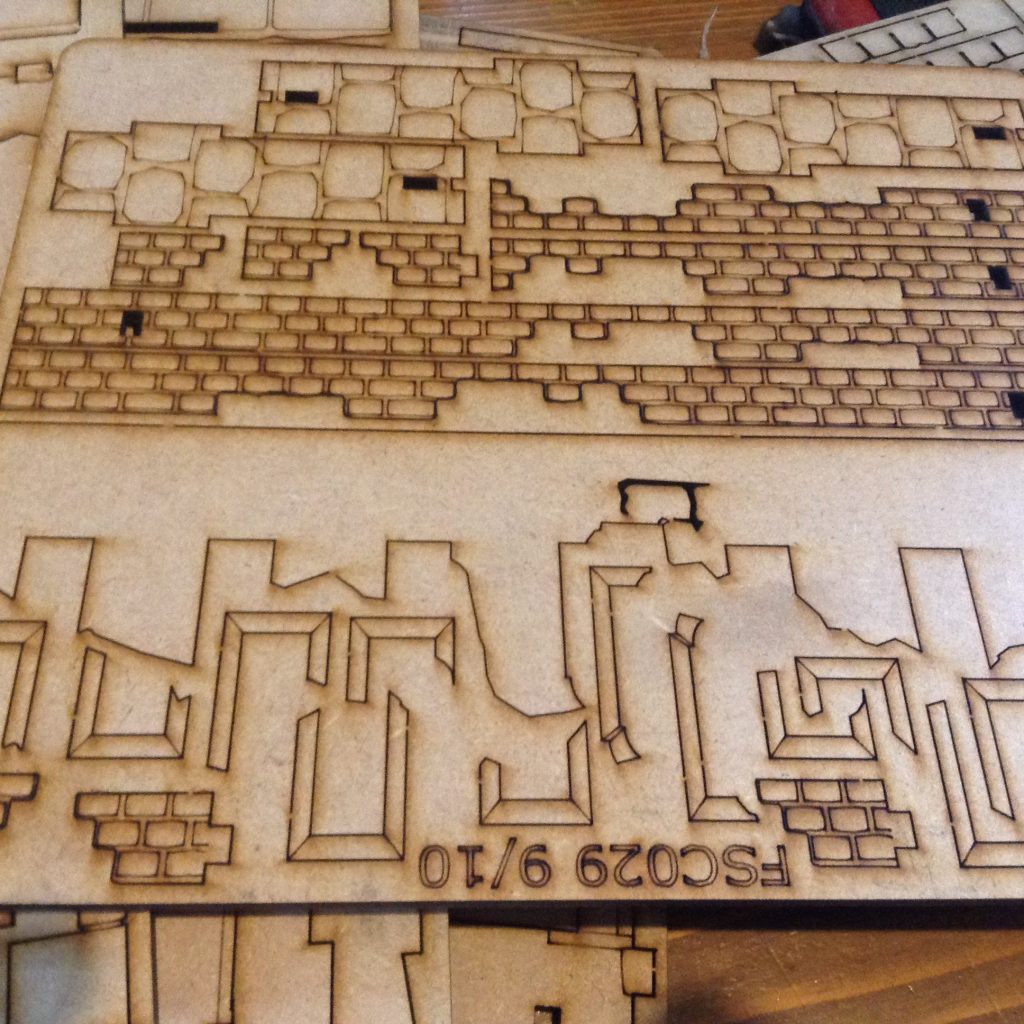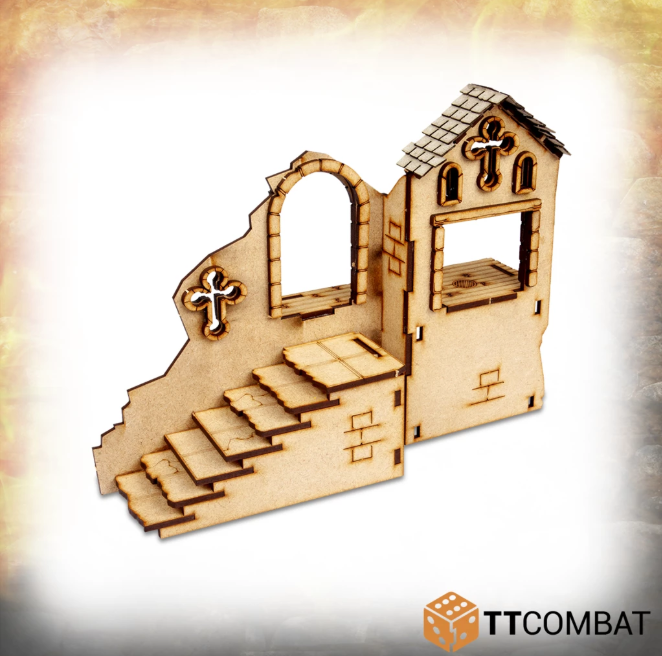Let’s face it, we all need terrain for our games. Whether you play D&D or other role-playing games with minis, Warhammer 40k, Kill Team, Frostgrave or Age of Sigmar, your game looks so much better and more immersive with decent terrain rather than a flat empty game mat, or scratch terrain built from cardboard, old containers, books and shampoo bottles. Not there there’s anything wrong with that – we have all started there, trust me – but our games are so much better with half decent terrain on the table.
The problem is…. well ok, there’s two problems. The first (and arguably biggest) problem is price. Terrain is just so damned expensive, especially when the choice is either this bit of terrain or all these minis for my army for the same price. I mean, it takes a special kind of determination to buy two statues and a broken window when the same amount of cash will get you ten goat dudes. Let’s face it, you’re going to pick the goat dudes every time. For even a small amount of terrain, you could pick up a unit of troops or a unique and special character to lead them, while terrain just… well, terrain just sits there.
Which is why all too often terrain is left to a gaming club to buy, or it’s bought as a gift for someone else. That isn’t really as it should be, because terrain genuinely is the third player in any game. It’s the difference between a memorable immersive conflict across a war-torn battlefield or a gaming session in an evocative dungeon and a game that’s… well, less than that.
The second problem is that all too often, terrain is designed to only fit one specific game or genre. Most Warhammer 40,000 terrain would look out of place in a fantasy setting or World War II for example, and likewise your D&D dungeon diorama doesn’t exactly fit in the grim darkness of the far future. While some terrain could fit in if you squint a bit, there’s not a lot beyond your generic trees and outbuildings that cut across multiple game systems. That’s ok if you only play one game but most people don’t, and having to buy different terrain sets for all the different games is far from ideal.
Which leads us in a round about way to TTCombat. They make cheap-as-chips (or rather, cheap-as-back-when-I-remember-chips-were-cheap) MDF terrain that is quick to build, looks great painted or unpainted and has sets that are wonderfully generic mixed in with their collections. They are also highly modular so can be combined to create much larger setups should you desire.
One of their latest collections is the Savage Domain series. These cost between £9 and £20, and include a whole load of modular terrain pieces that can be built together in interesting ways so that your table need never look the same way twice. It’s clear that these have been released ostensibly to tie in with the release of Warcry as some sets do share some of that game’s aesthetic. There’s nothing wrong with that – far from it, and it’s much cheaper than GW’s offerings – but the sets will also work equally well for other systems and genres too.
I picked up the Abandoned Abbey set, figuring it would look great in the far future of Warhammer 40k for Kill Team games or as part of a larger mass battle setup. It would also look the part in a Word War II Bolt Action game, in Age of Sigmar or as a location in D&D and Frostgrave. In short, it’s as genre neutral as it can get, and looks terrific in each.
Your £20 gets you this bundle of joy through the letterbox.

That’s a lot of MDF! I mean, a whole shedload.
If I have one criticism of TTCombat in the past, it’s that their scenery didn’t come with instructions. That wasn’t so bad back when construction was far simpler or with smaller sets, but kits of this size desperately need instructions. Thankfully they’ve delivered, and pretty decent instructions are available as a PDF from the product page. At the time of writing this they’re not complete (the four portcullises lack instructions) but it’s easy enough to figure out what goes where. I recommend leaving them to last so it’s clear what pieces are required.
Building the scenery is simple enough. Tease out the parts or use a craft knife, file the edges smooth to remove any stubs left from the join, and use PVA or superglue to put the parts together. As with any assembly, it’s worth test fitting first as the order the pieces go together can be quite important! Get it wrong and the air will turn blue. Trust me, I know.
So, how much terrain do you get for your twenty shiny pounds?
This much.
These were all set up for a typical Kill Team sized game where the terrain is quite tightly packed. On a larger game on a 6×4 table just one set could easily command a third of the table when spaced appropriately. Take that, two statues and a broken window. And imagine running a D&D game set in that Abbey….
Ok, that’s a lie as you get even more than that – I still have this little lot to finish to make another large ruin, but I’ve run out of glue! :D

That will make this two-story staircase when it’s done, as well as provide the roof tiles for the sets.
All I have done so far is built the scenery and added a touch of spot colour to add a bit of contrast (gold for the windows, wooden floors and door, and metal for the portcullises). The MDF takes paint very well and a few thin coats doesn’t affect any of the detail at all. I plan to paint these up in a Greek Mediterranean style with white walls and red tile roofs and brickwork. They should look good in Warhammer 40k representing the ruins of a Sororitas Mission or Ecclesiarch building, a World War II village in Tuscany, and an Abbey in my fantasy games. Adding more of the Savage Domain kits will even further increase its versatility.
Rather than toss the leftover sprues, I’m cutting it into small pieces and interesting shapes for use as terrain scatter, basing material and random diorama stuff. Waste not want not!

I’d call that a win all round. Not bad for £20, right?

































